LEGACIES OF WAR STRIVES
FOR A LEGACY OF PEACE
FOR A LEGACY OF PEACE
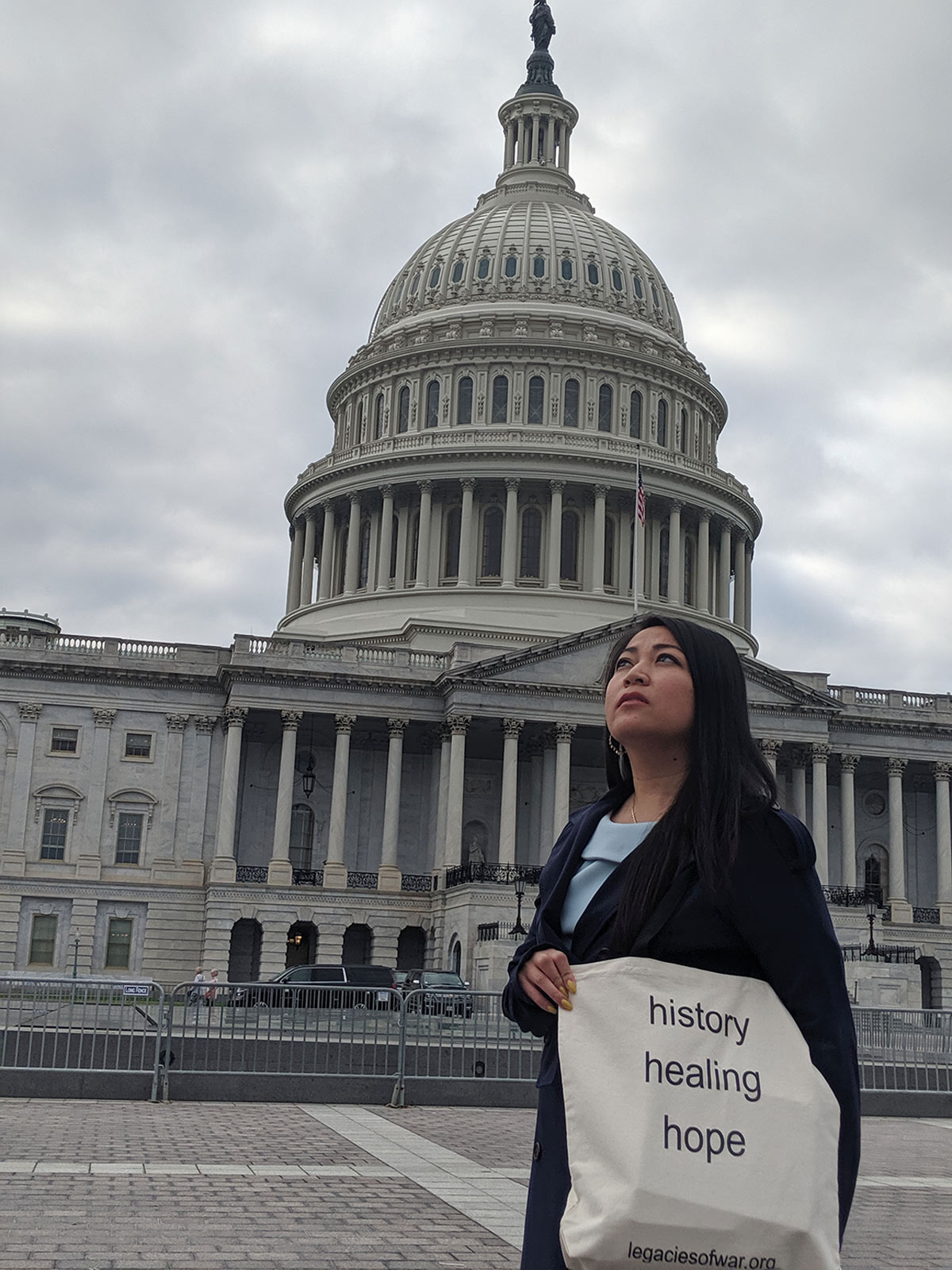
Sera Koulabdara in front of the Capitol building in Washington, D.C. (Photo courtesy of Legacies of War)
By Marc Phillip Yablonka
As a young child in Champassak Province, southern Laos, after coming home from school one day, Sera Koulabdara heard loud banging and shouting at her family’s door. Villagers were calling for her father, a doctor.
“He rushed out and when I was able to catch up to him, what I heard and witnessed, still haunts me to this day,” Koulabdara said.
Sera’s classmate, Lah, was screaming in pain and her mother was wailing in anguish, begging her father not to let her daughter die.
“I couldn’t take my eyes off of my father’s white lab coat, now drenched in blood. Everything was red,” Koulabdara recalled.
Sera’s father amputated five-year-old Lah’s leg in order to save her life. She had picked up a “bombie,” the Lao word for unexploded ordnance (UXO), and played with it like a ball.
But this did not happen during what has come to be known as the secret war in Laos, a tangent to the Vietnam War. It happened in 1989, almost 15 years after the end of the war in 1975.
Americans who had worked for the likes of the CIA, USAID, Air America, other clandestine airlines, and US Air Force personnel, abandoned the Lao and Hmong people, giving way to communist Pathet Lao forces in 1975, and decades of killing, maiming, and forced communist re-education in what the Pathet Lao government dubbed the “Seminar.”
“The presence of UXO was so normal in my childhood. Once I started going to school, I was taught to walk on well-worn paths to avoid being harmed,” Koulabdara told the Hmong Daily News.
The fear of injury, or death from UXO, forced Koulabdara’s family to flee war-torn Laos in 1990.
“I was six years old when we arrived in Washington, D.C. We drove past the Pentagon, the White House, countless monuments and gigantic buildings. I was in awe of the magnificence of my new home, but clueless of its deep connections to my birth country and its neighbors.”
Koulabdara’s family’s fears had been well-founded.
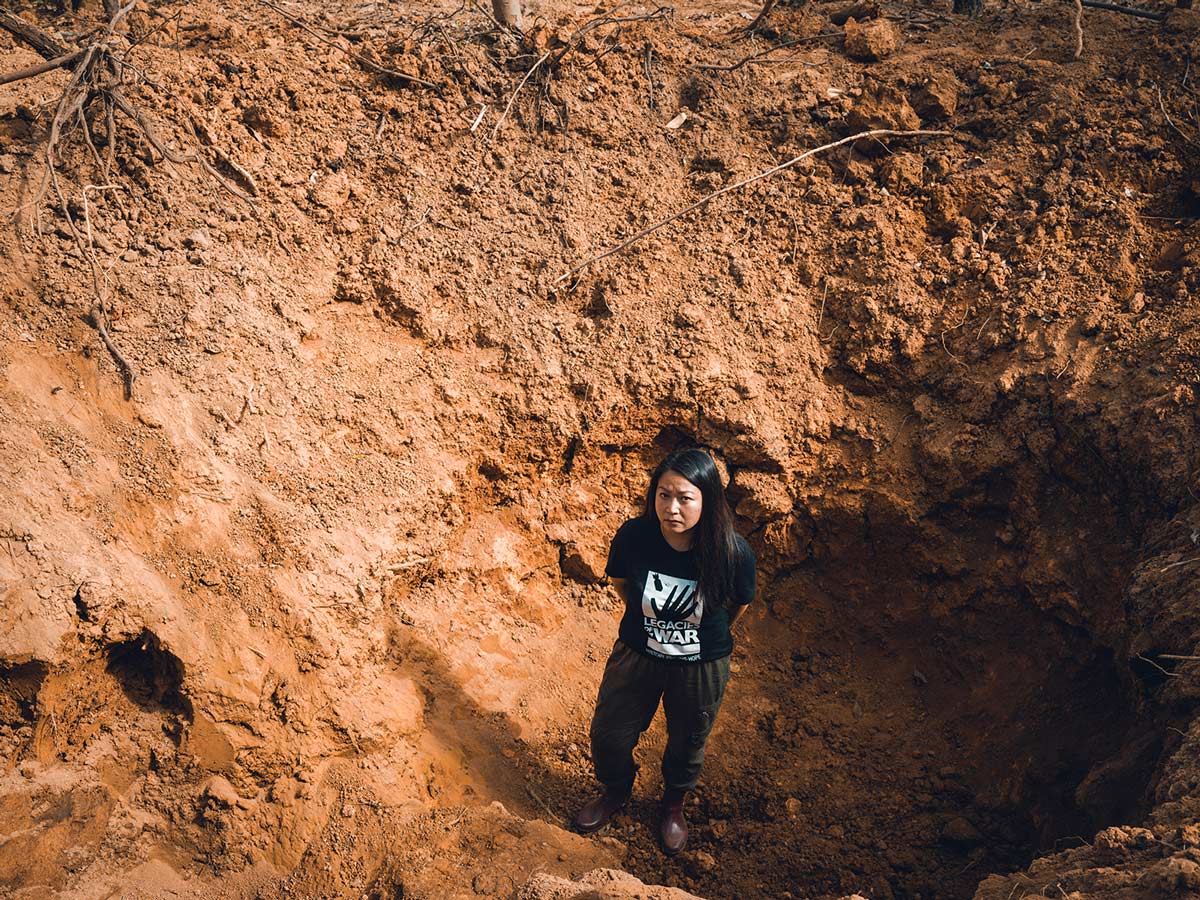
Sera Koulabdara in a bomb crater in Laos. (Photo courtesy Legacies of War)
“From 1964 to 1973, the U.S. dropped more than 2.5 million tons of ordnance on Laos during 580,000 bombing sorties—equal to a planeload of bombs every eight minutes, 24 hours a day for nine years—making Laos the most heavily bombed country per capita in history,” according to the Legacies of War organization.
“With over 270 million cluster bombies dropped on Laos, approximately 30 percent, about 80 million, did not explode on impact and are still in the ground,” the group’s website states.
“Roughly 30 percent of Laos is contaminated with UXO. Less than 10 percent has been cleared since the last bomb was dropped in 1973,” the website adds.
And according to demining group Mines Advisory Group, as of 2023, more than 50,000 people have been killed by unexploded bombs in Laos, 20,000 of those since the Vietnam War ended in 1975.
With those statistics in mind, it is no wonder that the Legacies of War organization would open its doors to Koulabdara.
Laos was declared a neutral country by the Geneva Accords of 1962. However, a study of the secret war in Laos clearly shows that the North Vietnamese Army violated those accords by uniting in Laos with the communist Pathet Lao in order to move troops and war matériel down the Ho Chi Minh Trail into South Vietnam to do battle with American forces.
In response, the CIA and US Air Force personnel entered Laos “sheep-dipped,” the military’s term for plain-clothed.
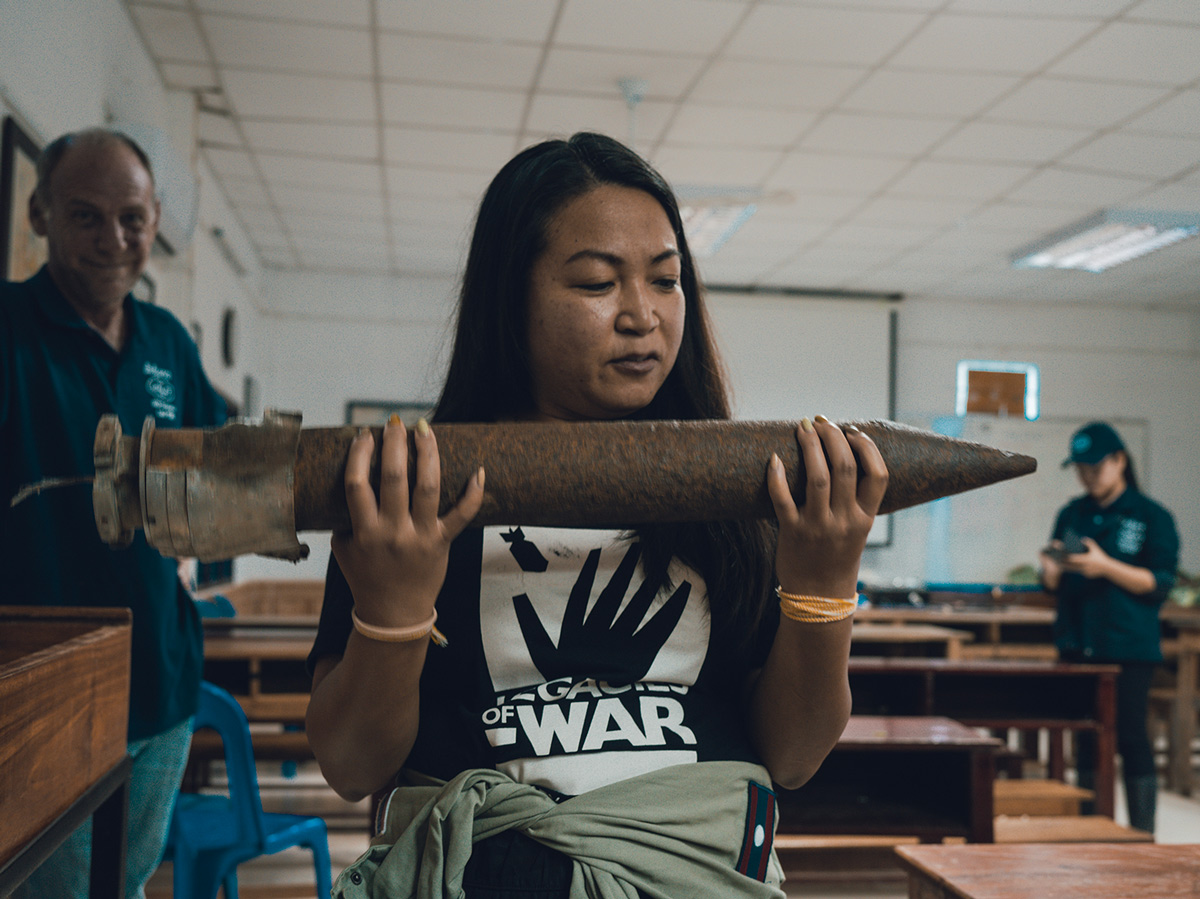
Sera Koulabdara with a UXO in Laos (Photo courtesy Legacies of War)
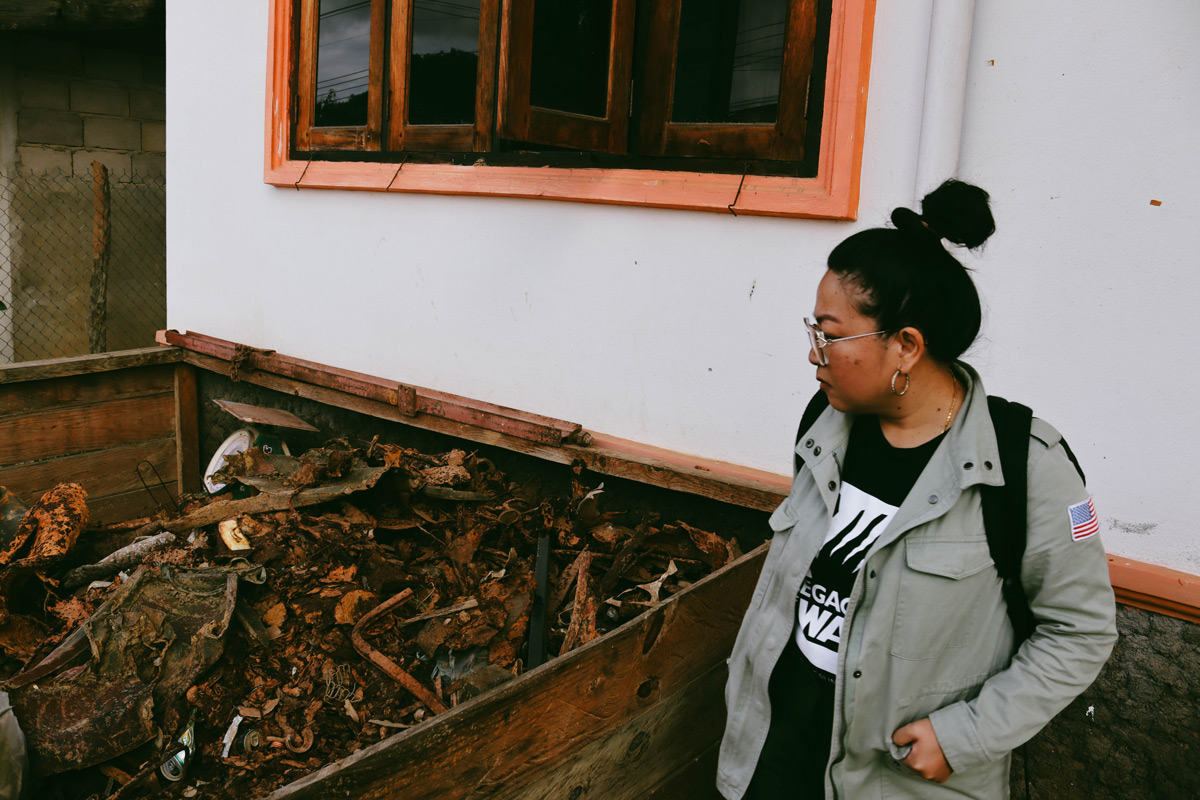
Sera Koulabdara looking at a pile of shrapnel in Sam Nuea, Laos. (Photo courtesy Legacies of War)
Regarding that American response, one former Air America pilot, speaking on condition of anonymity stated, “If the North Vietnamese had not violated the `62 Accords, those bombs would never have been dropped on Laos.”
He adds, “North Vietnam was responsible for the situation in Laos as they invaded a neutral country to kill American and South Vietnamese soldiers in South Vietnam. They also bear responsibility. So, why do people hold America solely accountable?”
So affected was Koulabdara by her childhood memory of those bombs, and the constant fear of UXO that, in 2015, she volunteered for the now 20-year-old Washington, D.C.-based Legacies of War organization and joined its board of directors. By 2019, she had become the Executive Director, and in 2021, its CEO.
Legacies of War, with Koulabdara now at its helm, strives to raise awareness about the history of the American bombings on Laos, Cambodia, and Vietnam, provides space for healing the wounds of war, and creates greater hope for a future of peace.
In addition to spear-heading several educational programs, Sera Koulabdara has turned Legacies of War’s mission into prolific action.
Under her leadership, US funding for UXO clearance in Laos, Cambodia and Vietnam reached $73 million – the highest level in history, and the Legacies of War Recognition and UXO Removal Act, a vital bill that would authorize $100 million for five years for humanitarian demining, was introduced by Senator Tammy Baldwin (D-WI) and Senator Jerry Moran (R-KS).
Legacies of War also received the inaugural Humanitarian Award of 2022 given by the Lao Peoples Democratic Republic for its successful advocacy efforts in securing funds for bomb removal and victims’ assistance.
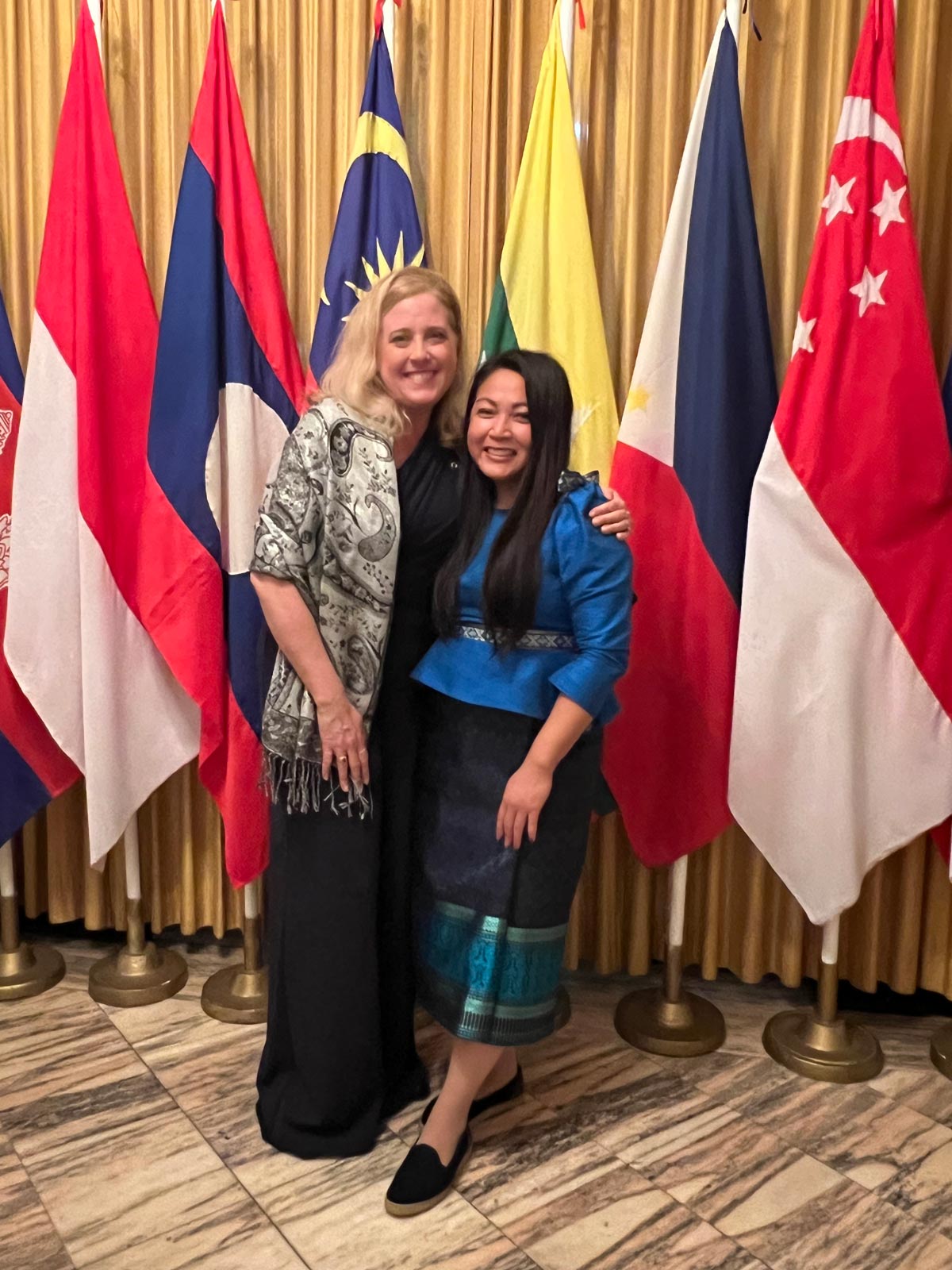
Heather Atherton and Sera Koulabdara at the Lao Embassy in Washington, D.C. this year. (Photo courtesy Heather Atherton)
Another person who knocked on Legacies of War’s door was Heather Atherton, a Sacramento, California-based journalist and publicist. She came to the organization in a manner which often occurs to people drawn to Southeast Asia and its history.
She was searching for information about a clandestine US Air Force flight, code name Baron 52, which was shot down by communist forces in Laos in 1973, in between the signing of the Paris Peace Accords by Henry Kissinger and North Vietnam’s Le Duc Tho, and the release of the American POWs from Hanoi’s infamous Hanoi Hilton and other prisons.
No trace of the crew of Baron 52 was ever found. Most eerily to Atherton, her own father was scheduled to be on that flight, but by the Grace of God, was on leave. A fact that haunted her father to his dying day and caused him survivor’s guilt and PTSD. And his daughter Heather as well. Her father passed away in 2017 after a long battle with Agent Orange-induced kidney failure.
“I came across Jessica Pearce Rotondi’s book What We Inherit, about her journey to understanding her family’s decades long fight to find answers on the fate of her uncle’s mission in Laos, when he was shot down, something she learned about after her mother had passed away. It was a journey to find answers to her own mother’s lifelong trauma from the war and make sense of it while traveling to Laos to find the location in the jungle where they were shot down,” Atherton said.
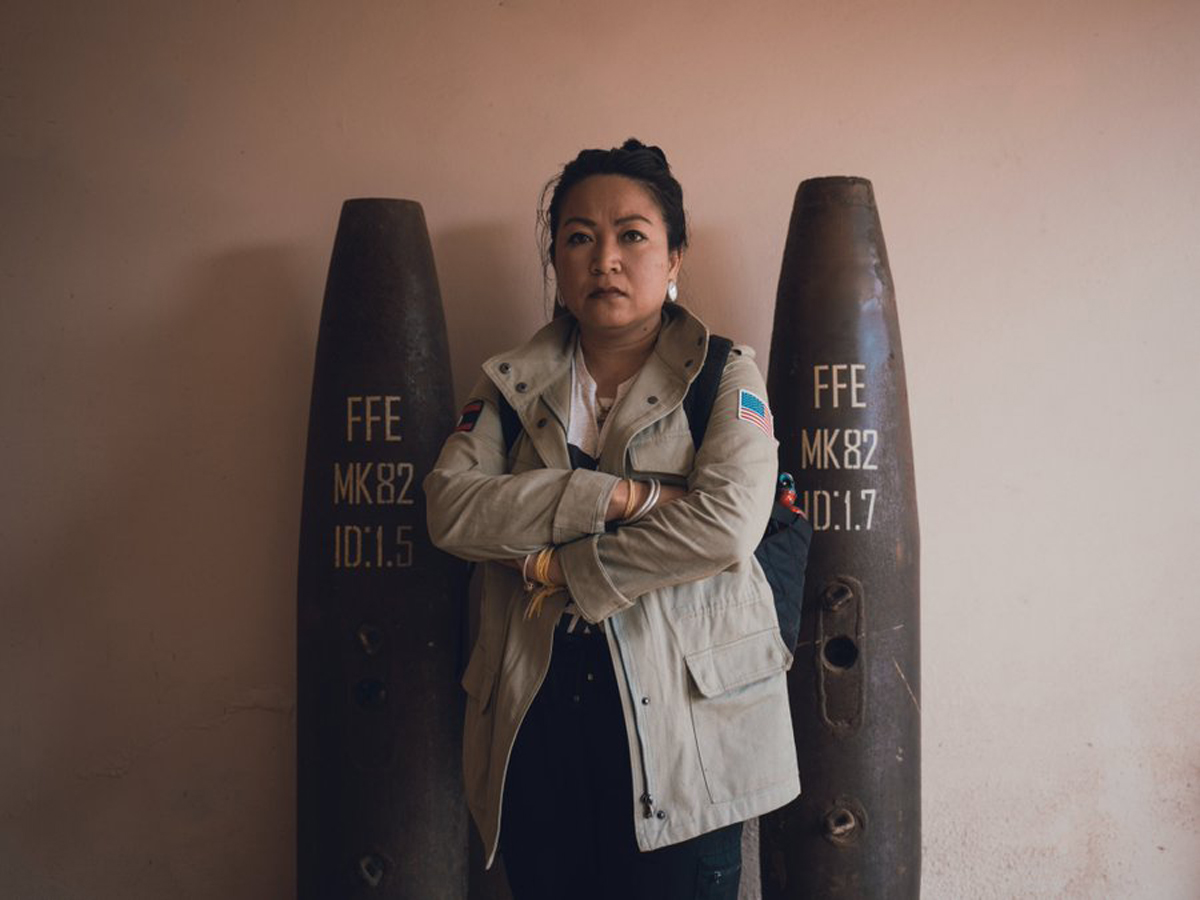
Sera Koulabdara with UXO in Pakse, Laos. (Photo courtesy Legacies of War)
“I admired her story and the synergy of our missions and reached out to her. She recommended I connect with Legacies’ mission, as she had as a trustee. I immediately began volunteering and then joined the board as a trustee in 2023 to help further their mission to remove the bombs that these missions helped to target,” she told the Hmong Daily News
“I started as a volunteer in 2020 assisting with communications strategy, advocacy to Congressional members. I was invited to join the board in late 2022 and served for a year, during the 50th anniversary of the signing of the Paris Peace Accords,” she said.
“In that time I continued to support communications strategy and develop op-eds to promote their mission of both education and removal of the mines still present in the soil in Laos, Cambodia and Vietnam, but primarily in Laos,” she added.
Atherton continues to support Legacies of War four years later.
“I believe wholeheartedly in the Legacies of War mission. In my six years of research on this [Baron 52] incident I have schooled myself on this period of history to understand the full context of the political environment this incident happened in,” she added.
In addition to aiding the Legacies of War organization, Atherton continues to research Baron 52 and recently wrote an article about the war in Laos and UXO for USA Today.
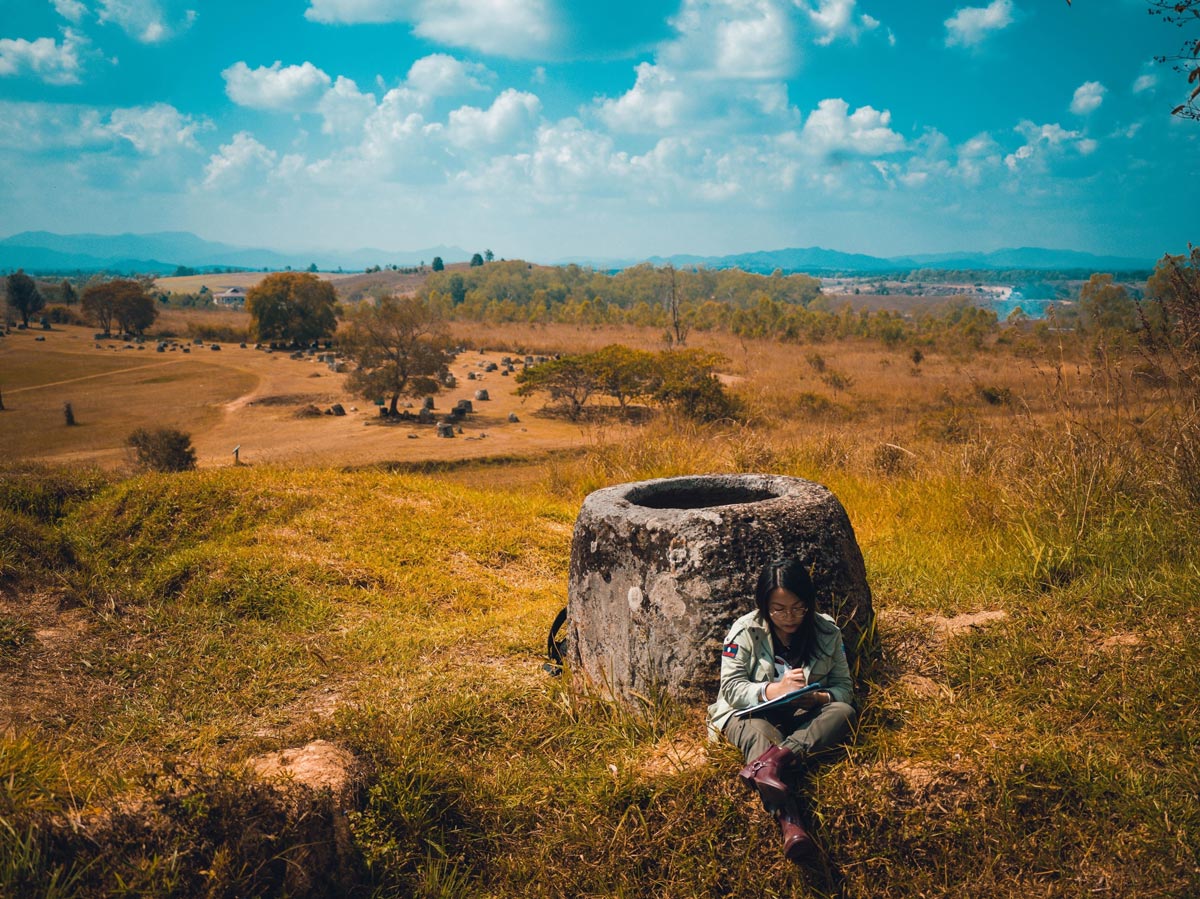
Sera Koulabdara on the Plain of Jars, Laos. (Photo courtesy Legacies of War)
In that article, she stressed, “Though Laos was a neutral country during the Vietnam War, the United States dropped more than 2.5 million tons of bombs there in an attempt to slow the movement of supplies and people into neighboring Vietnam.”
Atherton is correct. Per the Geneva Accords of 1962, Laos was a neutral country. However, according to multiple sources and Wikipedia.com., its neutrality was violated by a welcomed force of 30 to 40,000 communist North Vietnamese troops, the people she referenced in her article, who were headed to South Vietnam, with war matériel, to join Viet Cong cadres in their fight against US forces.
“The solution is simple,” emphasizes Koulabdara. “We must find and destroy these UXO before it claims another child’s life. Legacies of War’s answer is to ensure that funding to solve this problem remains a priority for the USG,” she says.
“These are American bombs, war trash littering Laos, Cambodia and Vietnam. We must hold our country accountable for the clean-up, victims’ assistance and preventive explosive ordnance risk education work. It’s been over 50 years, let’s get the job done!” she stresses.
The Air America pilot, however, countered, “The liberal media pushes Laos as an American Catastrophe and American taxpayers should pay for it. I say let Vietnam pay for it. They caused it.”
More information can be found at the Legacies of War website https://www.legaciesofwar.org.
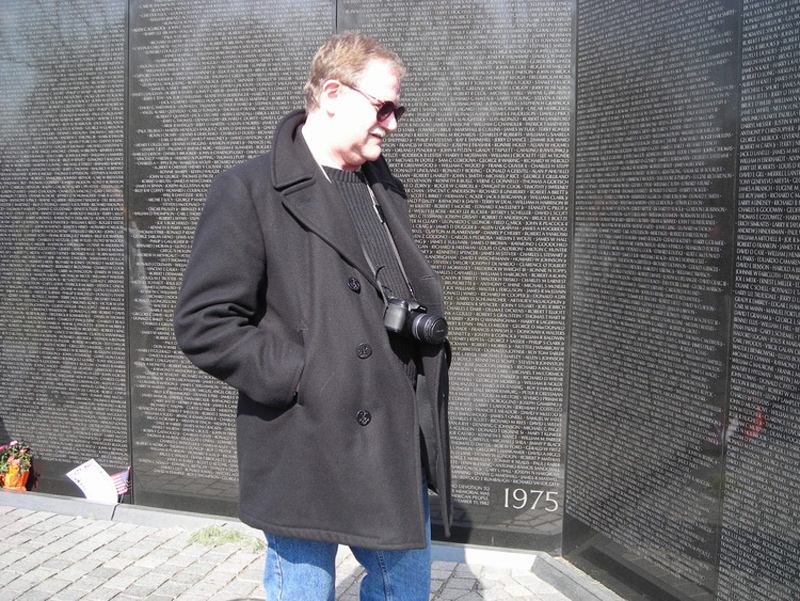
ABOUT THE AUTHOR — Marc Yablonka is a military journalist whose reportage has appeared in the U.S. Military’s Stars and Stripes, Army Times, Air Force Times, American Veteran, Vietnam magazine, Airways, Military Heritage, Soldier of Fortune and many other publications. He is the author of Distant War: Recollections of Vietnam, Laos and Cambodia, Tears Across the Mekong, Vietnam Bao Chi: Warriors of Word and Film, and Hot Mics and TV Lights: The American Forces Vietnam Network.
Between 2001 and 2008, Marc served as a Public Affairs Officer, CWO-2, with the 40th Infantry Division Support Brigade and Installation Support Group, California State Military Reserve, Joint Forces Training Base, Los Alamitos, California. During that time, he wrote articles and took photographs in support of Soldiers who were mobilizing for and demobilizing from Operation Iraqi Freedom and Operation Enduring Freedom.
His work was published in Soldiers, official magazine of the United States Army, Grizzly, magazine of the California National Guard, the Blade, magazine of the 63rd Regional Readiness Command-U.S. Army Reserves, Hawaii Army Weekly, and Army Magazine, magazine of the Association of the U.S. Army.
Marc’s decorations include the California National Guard Medal of Merit, California National Guard Service Ribbon, and California National Guard Commendation Medal w/Oak Leaf. He also served two tours of duty with the Sar El Unit of the Israeli Defense Forces and holds the Master’s of Professional Writing degree earned from the University of Southern California.
Leave A Comment